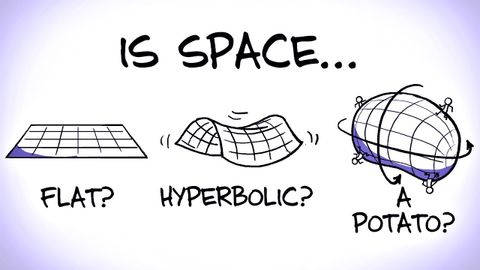What Is The Shape of Space? (ft. PhD Comics)
Summer 發佈於 2020 年 11 月 03 日  沒有此條件下的單字
沒有此條件下的單字US /ɛnˈtaɪr/
・
UK /ɪn'taɪə(r)/
- adj.全體的 ; 完全的;未分割的;全緣的 (植物學)
US /ɪˈvɛntʃuəli/
・
UK /ɪˈventʃuəli/
US /ɪˈkwɪvələnt/
・
UK /ɪˈkwɪvələnt/
US /ˈfɪzɪkəl/
・
UK /ˈfɪzɪkl/
- n. (c.)身體檢查
- adj.身體的;肉體的;物質的;物理的
- n.體育

